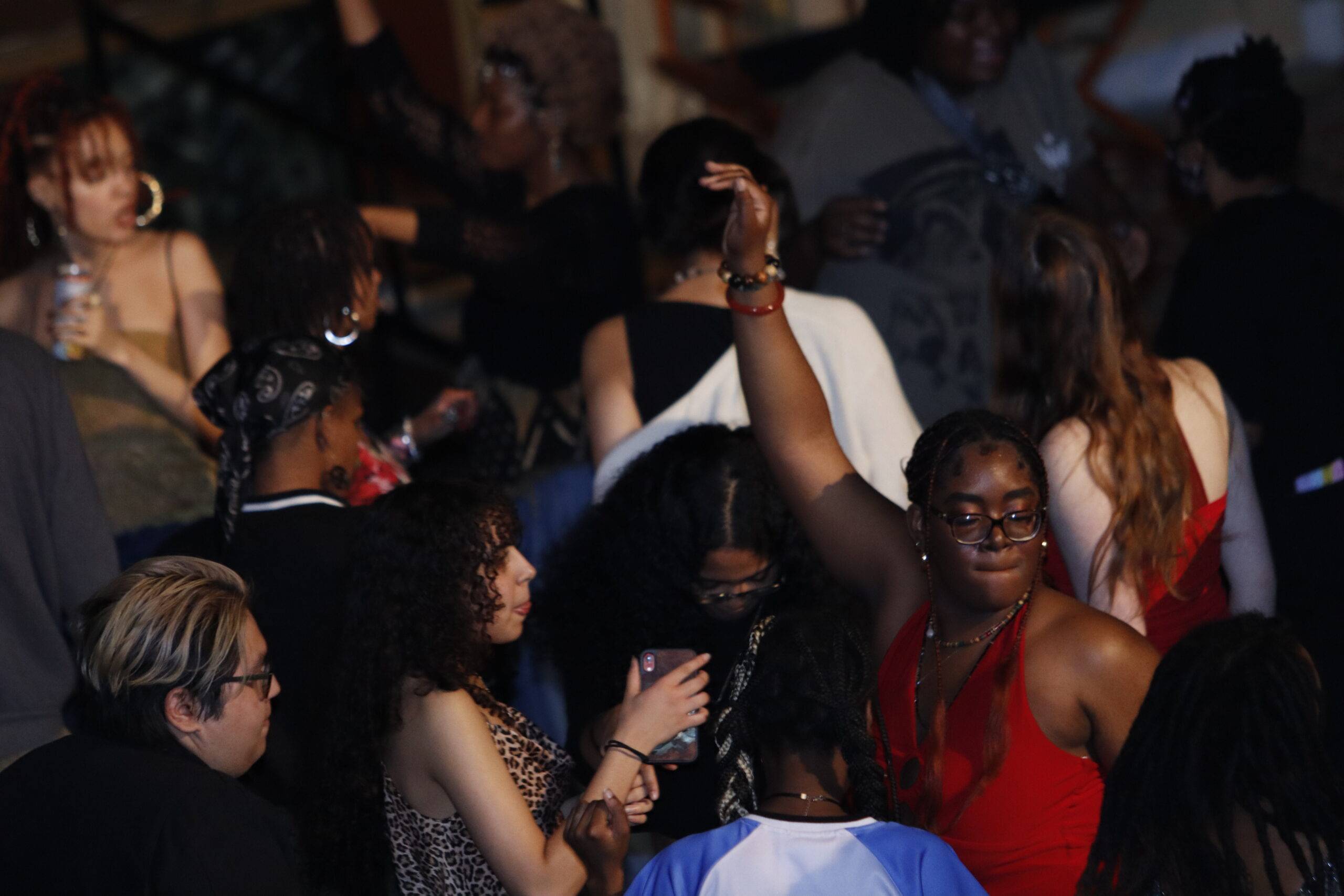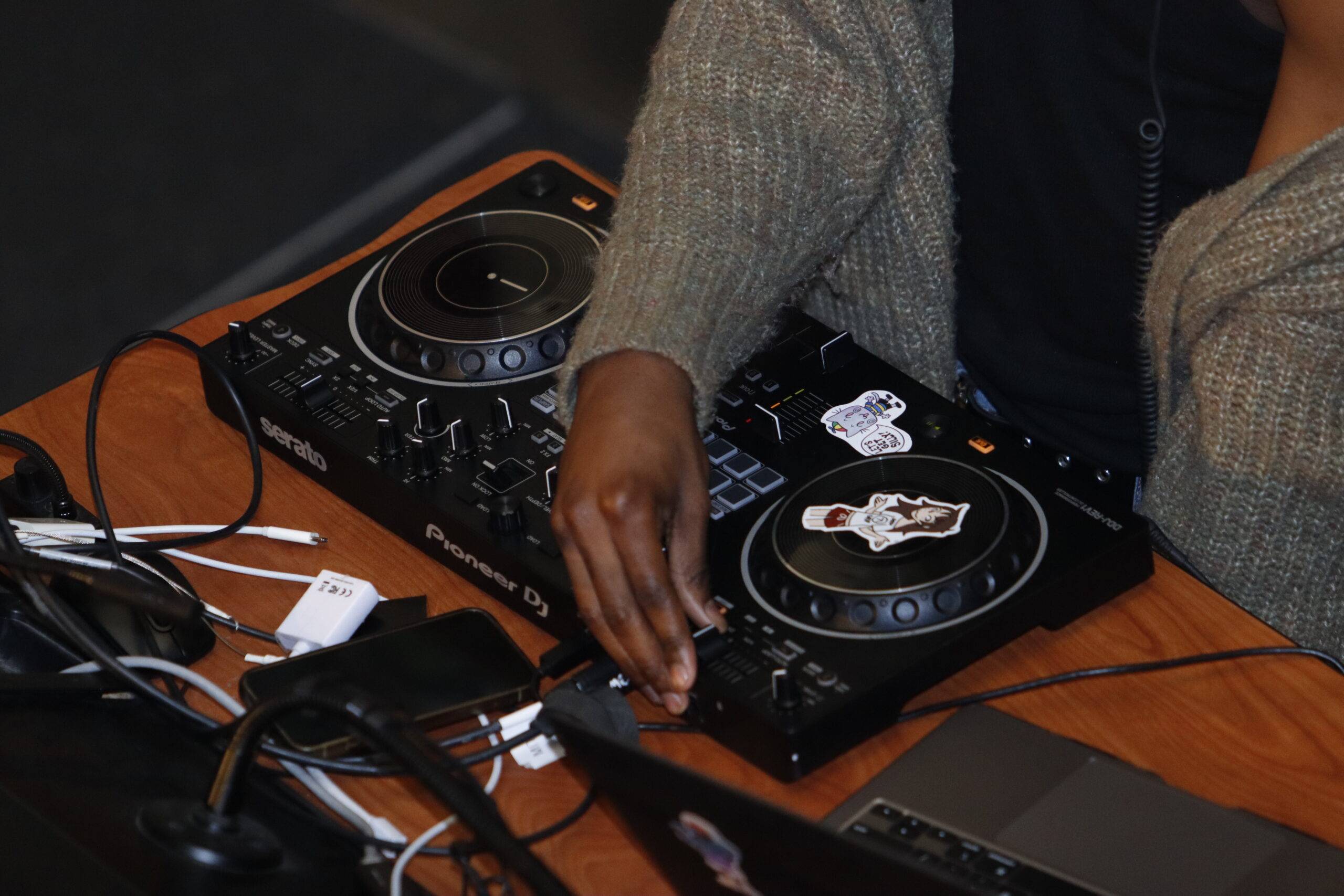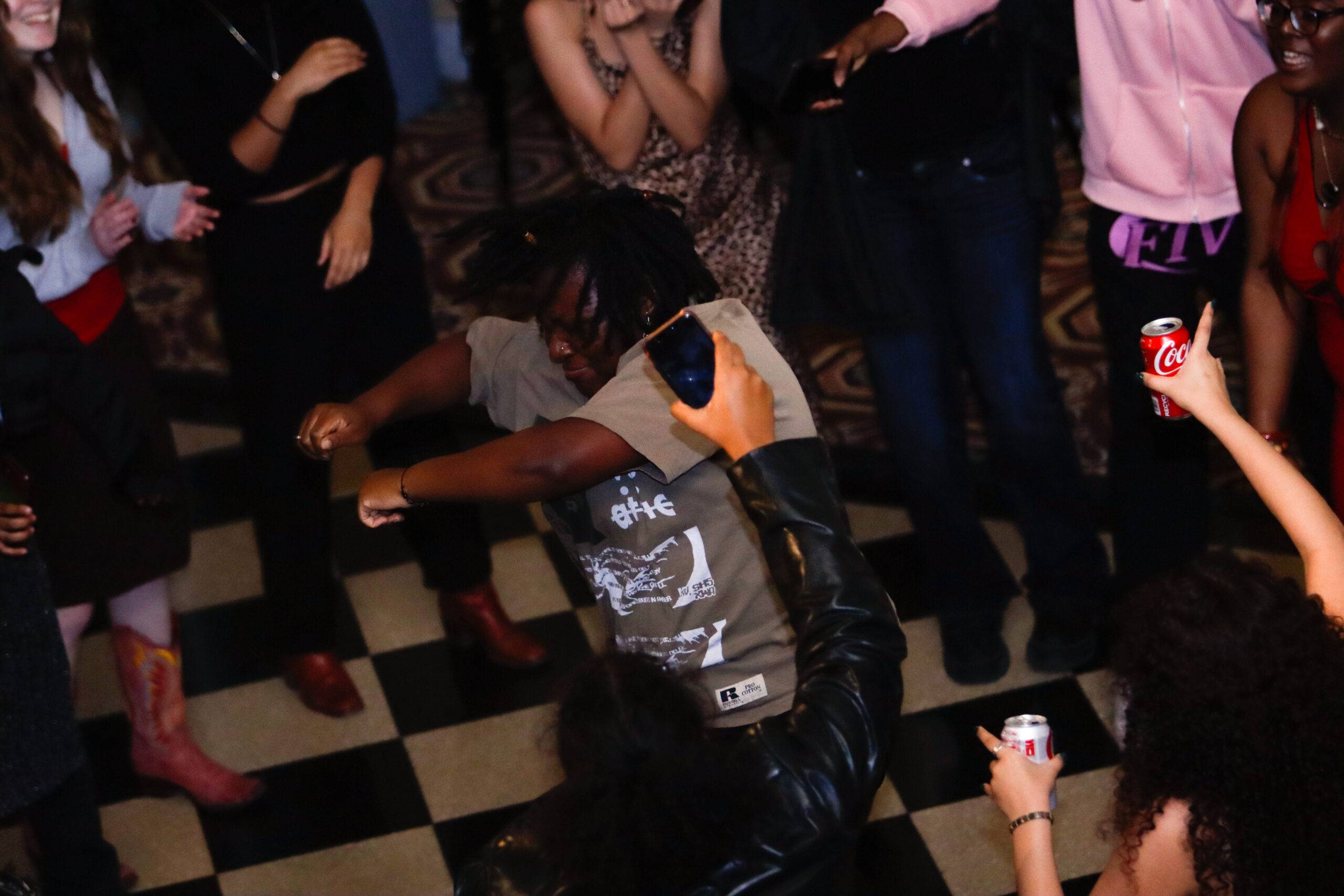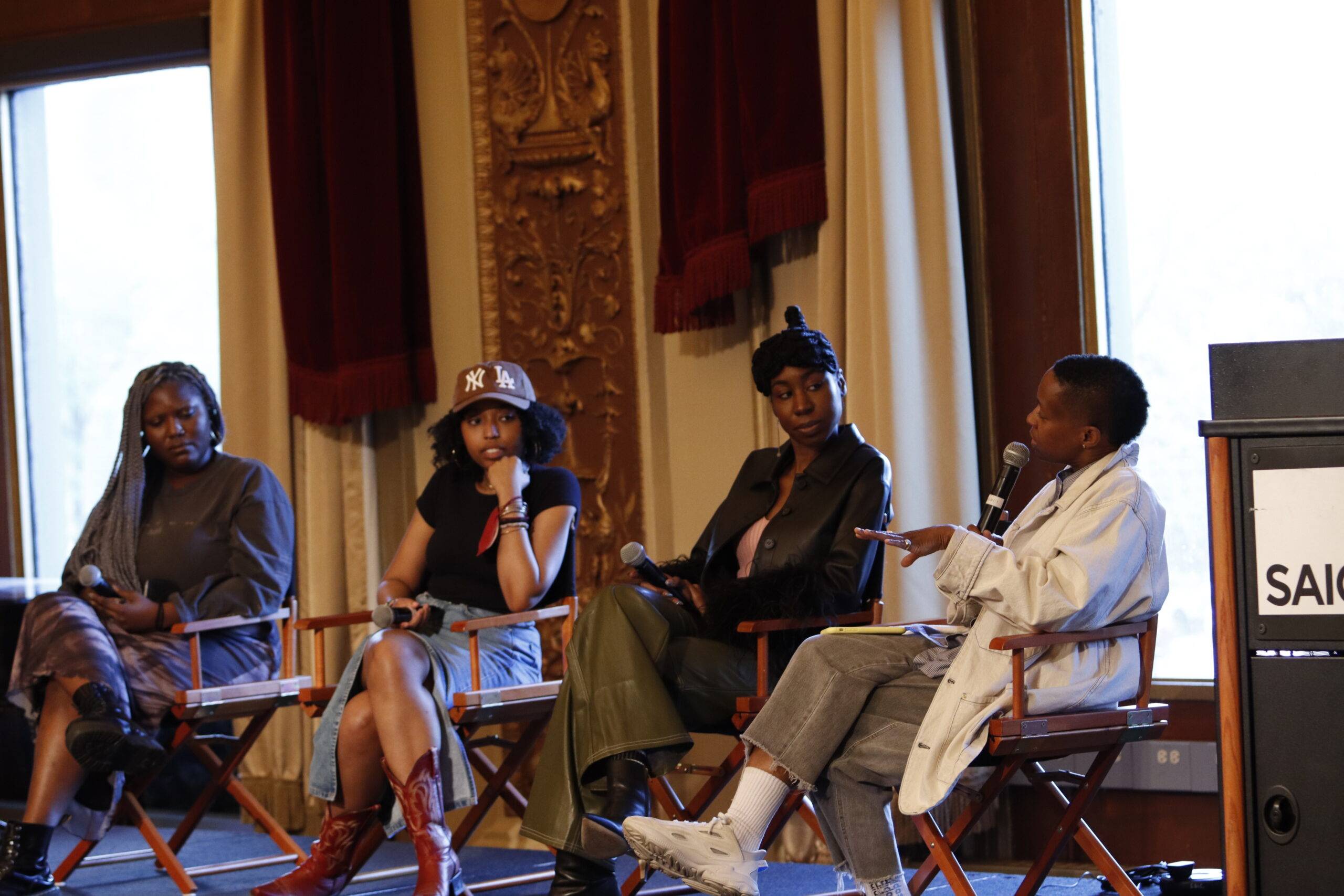On Friday, Apr. 21, 2023, BLK@SAIC, a student group organized an event at the Maclean Ballroom with speakers, performers, live music, and food to celebrate and honor the Black community of the School of the Art Institute of Chicago (SAIC).
The group has historically run this event since 2016. To organize this year’s event, BLK@SAIC collaborated with other groups within the school, from Campus Life to Student Multicultural Affairs and the Career and Professional Experience (CAPX). They also partnered with the Coalition of Black Restorative Artists (COBRA), a student organization that seeks to cultivate community hangouts for Black Graduate Students at SAIC and the larger Black community.

The event, while open to the general public, was meant for Black students, staff, and faculty at SAIC. j, one of the organizers and a student in the Fiber Materials department told F Newsmagazine. “The focus is for Black people to just get a moment in the year to celebrate, to come and get some free food, to hear some cool talks and hear some cool music,” j said.
Another organizer and co-leader for BLk@SAIC, Mya Jones, said organizing the event was also important to “help facilitate getting the group back up on its feet” after the COVID-19 crisis.

Organizers told F that they wanted this event to employ and connect Black people together.
“It’s a nice opportunity to connect with Black people that we know, to get them paid to do a speaking event, to get them paid to perform. [It’s] a way to support people in our community that we care about,” j shares. “It’s good for us to have resources to put something on for ourselves, as opposed to someone else putting on something for us.”
“Just being here at SAIC, which isn’t a predominantly Black school even though the school is very diverse… I think having the opportunity to just celebrate being Black and taking up space as Black students, I think that’s really important,” Mya adds.
The night, Mya described, was meant to “represent not just African American culture, but the entire Black diaspora.” This thought went into many details of planning – down to the food, which not only served African American, but also Caribbean delicacies.

During the event, a group of distinguished alumni and faculty from SAIC also spoke about graduate studies and the world beyond, and what this entails for Black students. The speakers were Ayanah Moor, Jordan Barrant, Alexandria Eregbu, and Saida Blair.

In her opening remarks, Ayanah Moor, an associate professor at SAIC, said she was “really happy to be a part of this conversation” before talking about how she prepared for the event. “I spent time considering my relationship to forms where Black identity and culture are centered, in the context of our school.”
She acknowledged how this event, while highlighting the school’s support for underrepresented student populations, such as Black students, simultaneously allows the school to boast as a form of virtue signaling. “The school’s role in hosting is for me to tell,” she proclaimed, demonstrating that the true power resides in the voice of the people.
In their panel, the speakers discussed the idea of “Post-Black” as a way of redefining blackness and identity within art. Alexandria Eregbu, a faculty in the Fiber & Material Studies department at SAIC, shared notes on different authors, theorists, and artists who’ve broken down the form of Blackness in their art, such as Alexis Pauline Gumbs, who investigates the social narratives within the Black experience. They went on to discuss the defining issues and moments that occur for students after graduating.

The night continued with live performances by Mello.Unn, Spliff Anyev Ans, Ctrlzora, Miss Twink USA, and more. As the night went on, the crowds grew larger; eventually, everyone was on the floor dancing to the music. The event ended around midnight.
In times when the loss of Black lives to police brutality and violence feels ongoing, the idea of grief becomes intertwined with the fetishization of suffering. When asked about this, j describes: “It happens everywhere… there is a certain liberal fetishization of Black death and Black trauma.” They continue by saying: “The sad stuff exists, but it doesn’t have to exist in isolation. It’s good to have something uplifting, you know? To just get together.”







